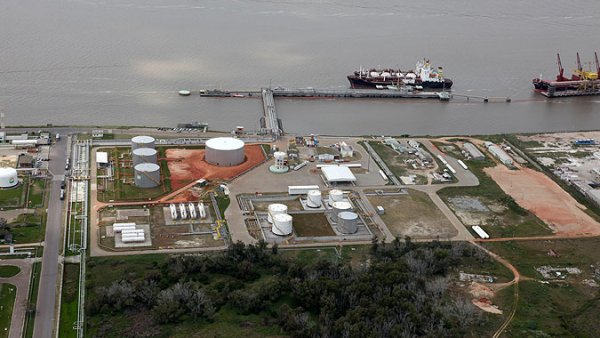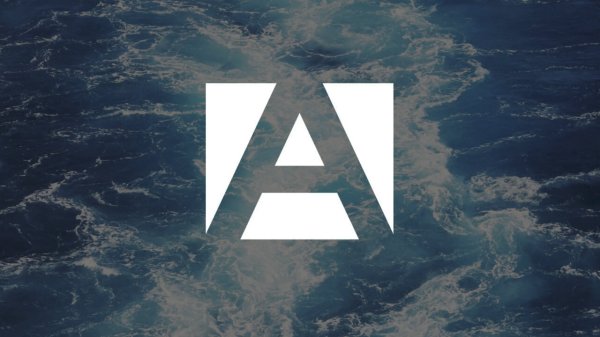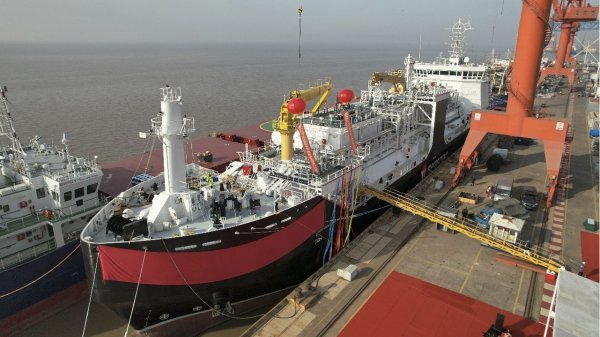Maersk Line spent $1.2bn more on bunkers in 2017; average price was highest since 2014
Boxship giant's annual spend jumped 57.1% to $3.2bn last year.
Maersk Line reports that it spent $1.2 billion more on bunker fuel in 2017 compared to the previous year.
The boxship giant's total annual spend on marine fuels rose by 57.1 percent to $3.2 billion last year, up from $2.1 billion in 2016.
The average price spent on bunkers by Maersk Line in 2017 was $320 per tonne - a rise of $97, or 43.5 percent, on the $223-per-tonne figure recorded in 2016. It is the highest annual average price since 2014 and breaks the trend of annual decreases seen over the last few years.
A summary of Maersk Line's average fuel prices since 2012 has been provided below.
Average annual fuel prices ($ per metric tonne)
Meanwhile, total bunker costs for A.P. Moller - Maersk Group were $3.372 billion in 2017 compared to the previously reported $2.1567 billion in 2016 (though in the latest report the figure appears as $2.023 billion, which is less than the $2.1 billion amount spent by Maersk Line).
Unit cost at fixed and floating bunker price; bunker efficiency
Maersk Line's unit cost at fixed bunker price in 2017 was almost on a par with the previous year at just 0.2 percent higher. The result was said to have been negatively impacted by lower headhaul utilisation as well as lower backhaul volumes as well as the 43 percent increase in the average bunker price.
"Maersk Line must regain its position as the industry cost leader by year-on-year improving unit cost at fixed bunker price," the container vessel operator stressed.
The unit cost at floating bunker, meanwhile, was 4.9 percent higher than in 2016; this was said to be mainly driven by the annual rise in the average bunker price.
Bunker efficiency per loaded FFE declined by 4.7 percent to 953 kg/FFE (910 kg/FFE). Maersk said this was partly due to the increased capacity committed to carrying volumes from the slot purchase agreements which are not counted as loaded volume. Efficiency was also impacted by lower headhaul utilisation, lower backhaul volumes and the June cyber-attack.
Fourth quarter
In the fourth quarter (Q4) of 2017, Maersk Line's bunker costs rose by 34.7 percent to $903 million.
The average fuel price in Q4 was $340 per tonne - an increase of $68, or 25 percent, year-on-year (YoY) and $33, or 10.7 percent, sequentially.
Overall financial results in 2017
In its financial results for the year, Maersk Line (excluding Hamburg Sud) achieved a net profit of $584 million in 2017 compared to a net loss of $376 million the year before, whilst its underlying profit of $521 million was also an improvement on 2016's loss of $384 million. Revenue during the 12-month period rose by 14.9 percent to $23.8 billion.
A.P. Moller - Maersk Group's underlying result swung into profit at $356 million, having posted a loss of $496 million the previous year.
Guidance for 2018
In its guidance for 2018, A.P. Moller - Maersk said a $100 change in the price of bunker fuel would lead to the group's earnings before interest, tax, depreciation and amortization (EBITDA) varying by $0.5 billion.
The boxship giant's total annual spend on marine fuels rose by 57.1 percent to $3.2 billion last year, up from $2.1 billion in 2016.
The average price spent on bunkers by Maersk Line in 2017 was $320 per tonne - a rise of $97, or 43.5 percent, on the $223-per-tonne figure recorded in 2016. It is the highest annual average price since 2014 and breaks the trend of annual decreases seen over the last few years.
A summary of Maersk Line's average fuel prices since 2012 has been provided below.
Average annual fuel prices ($ per metric tonne)
| Year | Price($/mt) | +/-($) | +/-(%) |
| 2017 | 320 | +97 | +43.5 |
| 2016 | 223 | -92 | -29.2 |
| 2015 | 315 | -247 | -44.0 |
| 2014 | 562 | -33 | -5.5 |
| 2013 | 595 | -66 | -10.0 |
| 2012 | 661 | -- | -- |
Meanwhile, total bunker costs for A.P. Moller - Maersk Group were $3.372 billion in 2017 compared to the previously reported $2.1567 billion in 2016 (though in the latest report the figure appears as $2.023 billion, which is less than the $2.1 billion amount spent by Maersk Line).
Unit cost at fixed and floating bunker price; bunker efficiency
Maersk Line's unit cost at fixed bunker price in 2017 was almost on a par with the previous year at just 0.2 percent higher. The result was said to have been negatively impacted by lower headhaul utilisation as well as lower backhaul volumes as well as the 43 percent increase in the average bunker price.
"Maersk Line must regain its position as the industry cost leader by year-on-year improving unit cost at fixed bunker price," the container vessel operator stressed.
The unit cost at floating bunker, meanwhile, was 4.9 percent higher than in 2016; this was said to be mainly driven by the annual rise in the average bunker price.
Bunker efficiency per loaded FFE declined by 4.7 percent to 953 kg/FFE (910 kg/FFE). Maersk said this was partly due to the increased capacity committed to carrying volumes from the slot purchase agreements which are not counted as loaded volume. Efficiency was also impacted by lower headhaul utilisation, lower backhaul volumes and the June cyber-attack.
Fourth quarter
In the fourth quarter (Q4) of 2017, Maersk Line's bunker costs rose by 34.7 percent to $903 million.
The average fuel price in Q4 was $340 per tonne - an increase of $68, or 25 percent, year-on-year (YoY) and $33, or 10.7 percent, sequentially.
Overall financial results in 2017
In its financial results for the year, Maersk Line (excluding Hamburg Sud) achieved a net profit of $584 million in 2017 compared to a net loss of $376 million the year before, whilst its underlying profit of $521 million was also an improvement on 2016's loss of $384 million. Revenue during the 12-month period rose by 14.9 percent to $23.8 billion.
A.P. Moller - Maersk Group's underlying result swung into profit at $356 million, having posted a loss of $496 million the previous year.
Guidance for 2018
In its guidance for 2018, A.P. Moller - Maersk said a $100 change in the price of bunker fuel would lead to the group's earnings before interest, tax, depreciation and amortization (EBITDA) varying by $0.5 billion.

|
IMO approves pricing mechanism based on GHG intensity thresholds
Charges to be levied on ships that do not meet yearly GHG fuel intensity reduction targets. |
|
|
|
||

|
VARO Energy expands renewable portfolio with Preem acquisition
All-cash transaction expected to complete in the latter half of 2025. |
|
|
|
||

|
NYK trials biofuel in milestone coal carrier test
Vessel is used to test biofuel for domestic utility company. |
|
|
|
||

|
H-Line Shipping orders LNG bunkering vessel
Vessel with 18,000-cbm capacity to run on both LNG and MDO. |
|
|
|
||

|
How to engineer and manage green shipping fuels | Stanley George, VPS
Effective management strategies and insights for evolving fuel use. |
|
|
|
||

|
Swedish government bans scrubber wastewater discharges
Discharges from open-loop scrubbers to be prohibited in Swedish waters from July 2025. |
|
|
|
||

|
MAN Energy Solutions achieves 100% load milestone for ammonia engine
Latest tests validate fuel injection system throughout the entire load curve. |
|
|
|
||

|
Petrobras secures ISCC EU RED certification for B24 biofuel blend at Rio Grande
Blend consisting of 24% FAME is said to have been rigorously tested to meet international standards. |
|
|
|
||

|
Stolt-Nielsen to fully control Avenir LNG with acquisition
Share purchase agreement to buy all shares from Golar LNG and Aequitas. |
|
|
|
||

|
Bureau Veritas supports launch of CIMC SOE's LNG bunkering vessel
Handover of Seaspan Energy's cutting-edge 7,600-cbm vessel completed. |
|
|
|
||
Related Links
- · Maersk Line posts $336m profit swing despite spending $218m more on bunkers [Insights]
- · Maersk Line posts Q1 loss as bunker costs jump 95% yoy [Insights]
- · Maersk pulls out of MSAR fuel trial [Insights]
- · Maersk, AkzoNobel in tie-up to slash carbon emissions [Insights]
- · Denmark [Directory]

